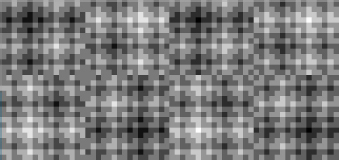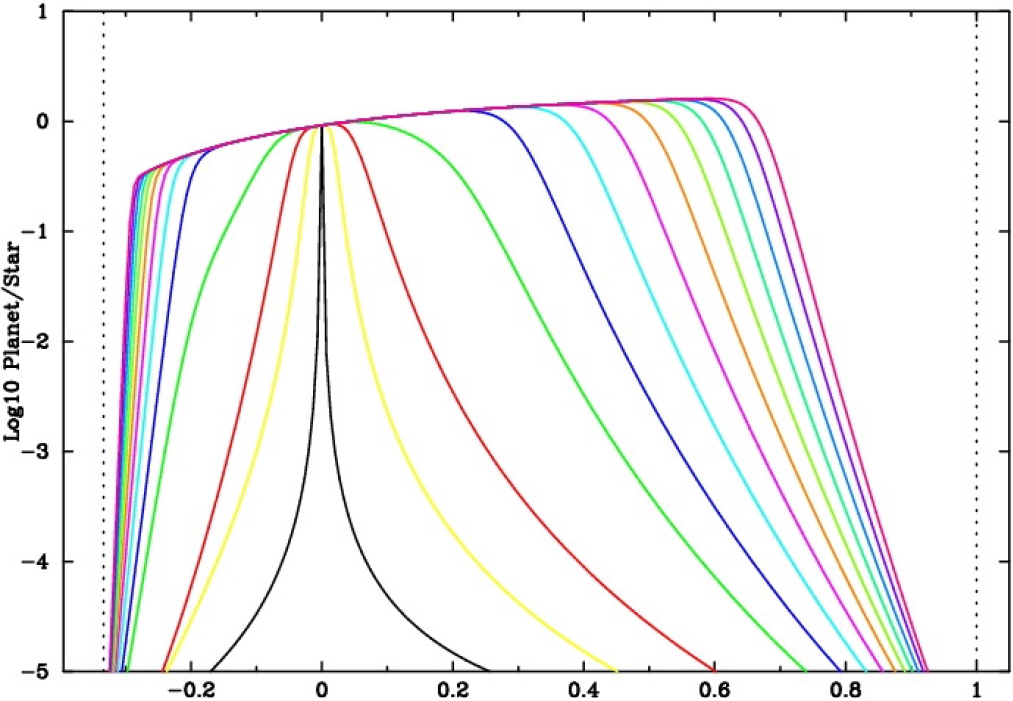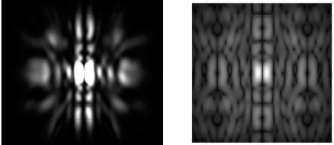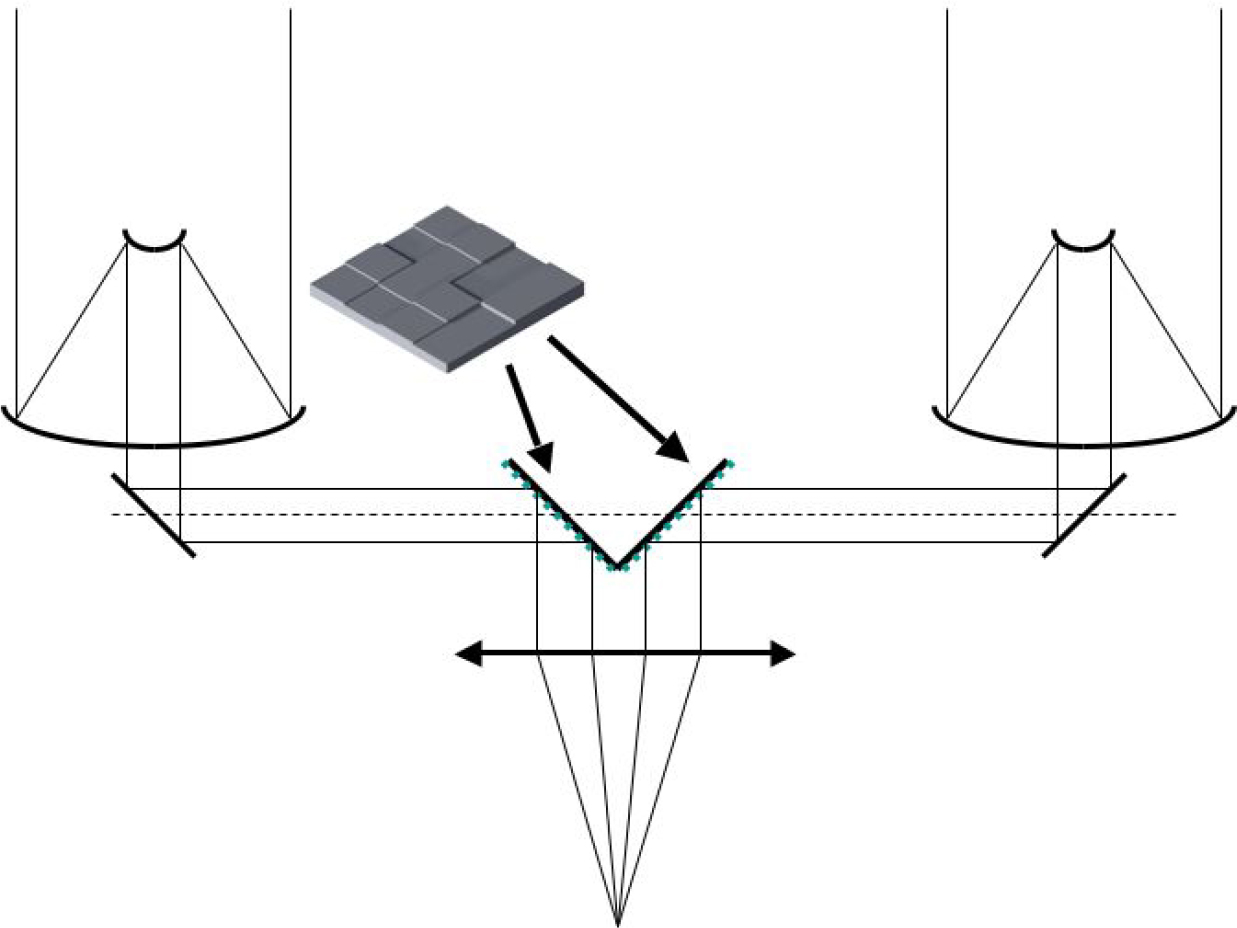Chasing exoplanets with the help of a chessboard and Pascal's triangle
Direct detection of an exoplanet (a planet outside our solar system) that is orbiting a star requires the stellar light to be dimmed as much as possible. This is due to the huge contrast in brightness (106–10) between the parent star and its orbiting planet, as well as the small angular separation (10−6 rd) of the telescope. In the mid-infrared, one way to image the planet against the background light of the star is by nulling interferometry, which uses at least two telescopes coherently recombined in the way proposed by Bracewell1, so that the brighter light from the star is cancelled out by light wave interference, allowing the orbiting planet to be seen.
When a π phase shift is applied to one of the arms of the telescope, a system of fringes with a central dark fringe is projected onto the sky. The star image, put on the dark fringe, is strongly attenuated, while the planet, if on a bright fringe, can be detected. Obtaining a π phase shift that brings different wavelengths to focus together (is achromatic) is mandatory because the wavelength domain where spectroscopic life signatures are to be found is broad2 (typically 6-18 μm), and it's a photon-starving experiment.
Various methods3 have been presented in order to approach an achromatic π phase shift in a large domain of wavelength-field reversal, including top-roof mirrors, and crossing a focus with stacks of dielectric (non-conducting) plates. Unfortunately, they typically make the two arms of the interferometer asymmetrical and introduce several additional optical components. We propose a new solution4,5 using a twin mirror made of cells of different thicknesses transposed as a chessboard pattern. It is the peculiar distribution of the cells' thickness that makes the π phase shift quasi-achromatic on a broad domain.
Figure 1 depicts our two-telescope interferometer. (A multi-axial recombination is shown here, but an uniaxial one is also valid.) The first telescope issues a beam of parallel (or collimated) light rays. Then, we introduce a cellular mirror (or a transparent plate) where cells produce optical path differences (OPDs) that are odd multiples of half the central wavelength (λo/2). Symmetrically, a cellular mirror where cells produce OPDs which are even multiples of λo/2 is put into the beam from the second telescope. At λo, each cell introduces a phase shift of either (2k + 1)π (odd mirror) or of 2k π (even mirror) on the fraction of the wave it reflects. Thus, a π phase shift between the two arms is applied for λ = λo. If now one develops as a Taylor's series the amplitude at the recombined output, with respect to x = Δ λ / λo = (λ − λo)/ λo, it appears that there is a peculiar distribution of the cells’ thickness for which the first terms of the development vanish, up to any given order 2n (provided that there are 2n cells per mirror). This magic distribution of the thickness, i.e. the number mk of cells of thickness k λo/2 , is given by the binomial coefficients which are recursively found thanks to Pascal's triangle. The main consequence is that, as long as x< 1, the nulling can be effective since the first non-vanishing term is xn. A quasi-achromatic nulling is thus reached when n is large enough (in practice n > 5).



The Pascal's triangle solution provides the distribution in z of the cells, but it does not say anything on the distribution of cells in x and y (on the surface of the mirrors). We have found one which is optimum in terms of darkening the residual point spread function (PSF) of the star image close to the axis. The pattern is built according to a recursive scheme, in the line of the ideas developed by Rouan6. Figure 2 shows the resulting pattern for the pair of mirrors (odd and even) when n=5.
We have developed a simulator based on a fully analytical solution to predict the performance of our configuration. In Figure 3 we compare, for a planet 10−6 fainter than its star, the nulling efficiency versus Δλ/λo for different orders of the best chessboard. It is worth noting the flatness of the star-to-planet ratio versus λ for the highest orders. The bandpass is typically [0.85λo − 1.7λo], i.e. one octave. Note that a realistic phase error between the two arms is introduced in the model.
An 8×16 device with a cell pitch of 600 μm was manufactured by SILIOS-France using an electron etching technique. The two masks (odd and even) are put side by side. The first images – in Fizeau recombination – show, as expected, a central dark fringe which is close to the model prediction, but more important which is fixed when λ ≠ λo, as illustrated in Figure 4. (The dark fringe would shift with classical mirrors.)
Our achromatic phase shifter for nulling interferometry is based on the use of a pair of chessboard mirrors with 2n cells of different thicknesses producing 2kπ and (2k+1)π phase shift at λ=λo. Thanks to a peculiar diophantine relation between the odd and even integers that describe the cells thickness, it is possible to reach a quasi-achromatic π phase shift on one octave around λo. In addition, for a proper distribution of the cells on the surface of the mirror, the planet-to-star contrast is largely improved. The predicted performance of the contrast enhancement, even when realistic phase errors are considered, is 106 within Δλ/λo = 0.9, well within the specifications of a space telescope such as the European Space Agency's DARWIN7 mission.
Our approach presents several advantages: a very compact and robust system, a fully symmetric design with respect to the two arms of the interferometer, and finally the concept can be extended to multi-telescope interferometers with a phase shift other than π. The use, in the future, of adaptive segmented mirrors based on micro optical electro mechanical systems (MOEMS) technology, could allow adjustment of the wavelength and a fine correction of error that would be beneficial to future exoplanet detection programs.




